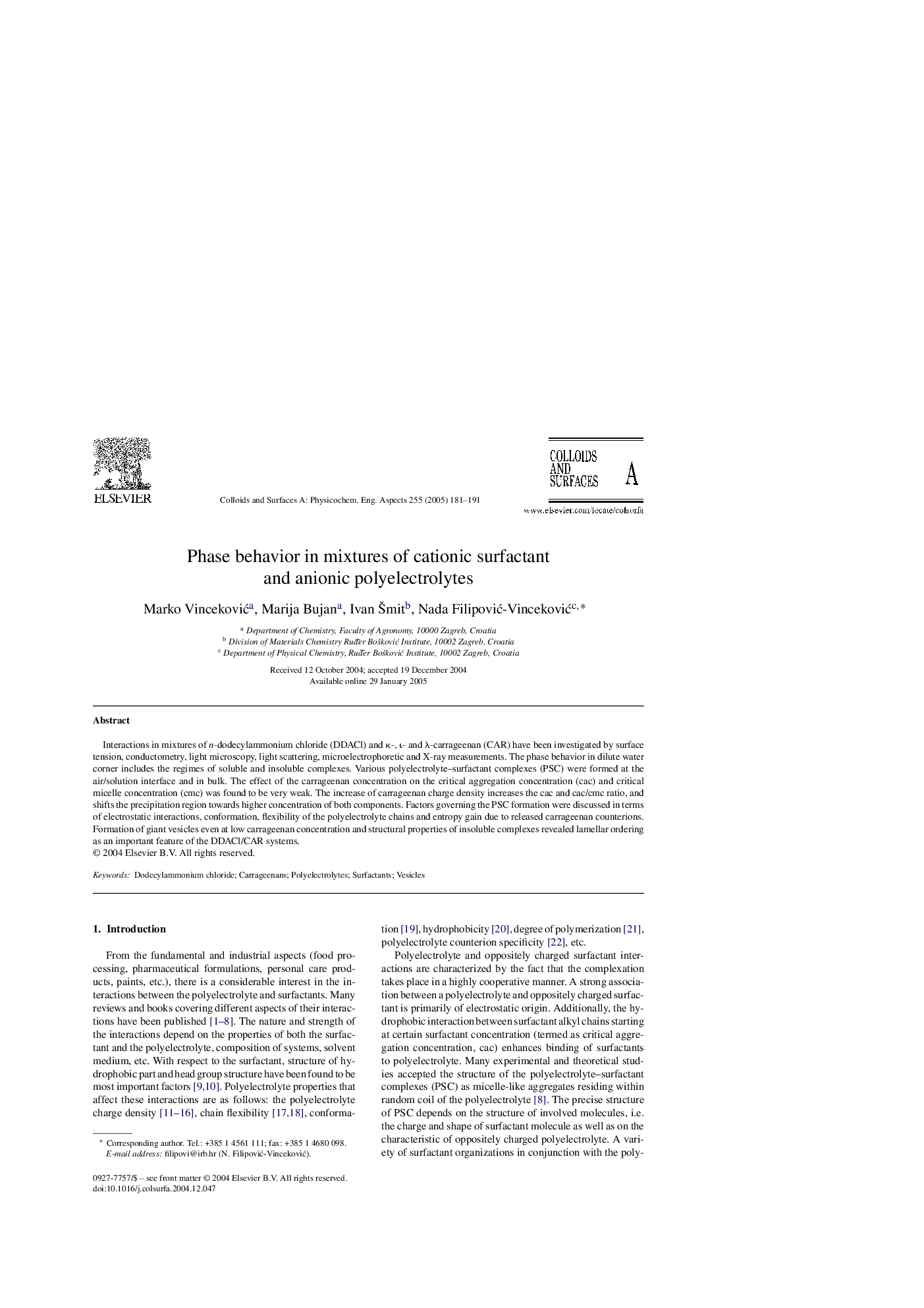| Article ID | Journal | Published Year | Pages | File Type |
|---|---|---|---|---|
| 9676071 | Colloids and Surfaces A: Physicochemical and Engineering Aspects | 2005 | 11 Pages |
Abstract
Interactions in mixtures of n-dodecylammonium chloride (DDACl) and κ-, ι- and λ-carrageenan (CAR) have been investigated by surface tension, conductometry, light microscopy, light scattering, microelectrophoretic and X-ray measurements. The phase behavior in dilute water corner includes the regimes of soluble and insoluble complexes. Various polyelectrolyte-surfactant complexes (PSC) were formed at the air/solution interface and in bulk. The effect of the carrageenan concentration on the critical aggregation concentration (cac) and critical micelle concentration (cmc) was found to be very weak. The increase of carrageenan charge density increases the cac and cac/cmc ratio, and shifts the precipitation region towards higher concentration of both components. Factors governing the PSC formation were discussed in terms of electrostatic interactions, conformation, flexibility of the polyelectrolyte chains and entropy gain due to released carrageenan counterions. Formation of giant vesicles even at low carrageenan concentration and structural properties of insoluble complexes revealed lamellar ordering as an important feature of the DDACl/CAR systems.
Related Topics
Physical Sciences and Engineering
Chemical Engineering
Colloid and Surface Chemistry
Authors
Marko VincekoviÄ, Marija Bujan, Ivan Å mit, Nada FilipoviÄ-VincekoviÄ,
